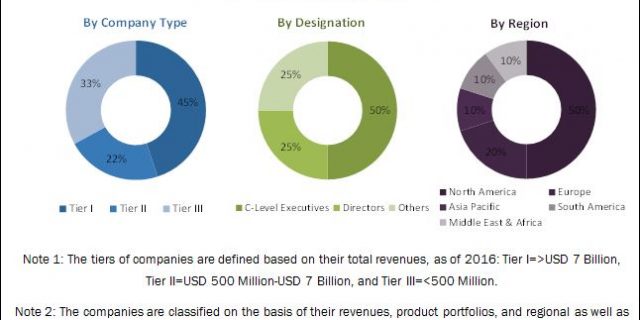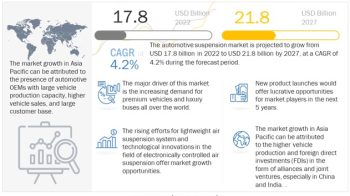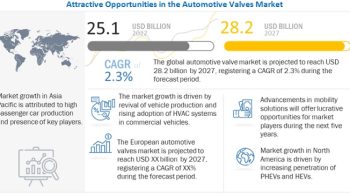
Electroactive Polymers Market was valued at USD 3.26 Billion in 2016 and is projected to reach USD 5.12 Billion by 2022, at a CAGR of 7.9% between 2017 and 2022.
Increasing biomimetic applications
Biomimetics is the most significant application of EAPs. In biomimetics, polymers are fabricated to resemble muscles. Although this technology is still in the development phase, various machines have been developed to imitate birds, fish, insects, and even plants. An EAPs actuated fish called floajet, which is commercially available in Japan, was developed by Eamex Corporation (Japan).
Currently, R&D on developing artificial intelligence, artificial vision, and artificial muscle is in progress. EAPs with characteristics such as flexibility, resilience, large actuation, and damage tolerance, which are similar to biological muscles, have high growth potential in these future applications.
EAPs technology based on electric field induced deformation of polymer dielectrics has promising opportunities, as it has high strains and energy densities. This technology has aided in developing human-like robots. Materials such as polypyrroles provide huge opportunities in this field. These materials have favorable biocompatibility properties and can be operated in body fluids, including blood.
Request Report Sample At https://www.marketsandmarkets.com/requestsampleNew.asp?id=87
One of the major challenges in the development of biomimetics is the lack of commercial actuator technology that can mimic natural muscles. Some of the major properties required for biomimetic performance of EAPs are strain, actuation pressure, density, efficiency, and speed. No material has yet been able to match the overall performance of natural muscles. Hence, biomimetics provide huge growth opportunities for the Electroactive Polymers market in the future.
Lack of extensive commoditization of EAPs
EAPs have been witnessing rapid R&D to realize their full benefits for high voltage and high strength applications. The high voltage applications involve risk of polymer breakdown resulting in loss of operability. This has led to increased demand for EAPs with high heat resistance and improved physical and mechanical properties, which requires capital-intensive R&D. In addition, research on EAPs materials with long-term operations is also under process.
Leading manufacturers of EAPs are yet to tap the potential applications of EAPs in biomimetics, better actuation mechanisms, and mass production techniques. Refining of processes such as synthesizing, fabrication, electroding, and shaping needs to be improved to provide better actuation capability and durability in EAPs for applications such as artificial muscle and biomimetics.
High level of R&D is also required for improved actuation force, energy conversion efficiency, long-term usage, and improved reliability of EAPs. Only a few players are involved in the R&D of EAPs for the biomimetic application. These factors pose a challenge to the growth of the Electroactive Polymers market, which is yet to be highly commoditized.
Read More: https://www.marketsandmarkets.com/PressReleases/electroactive-polymers.asp


